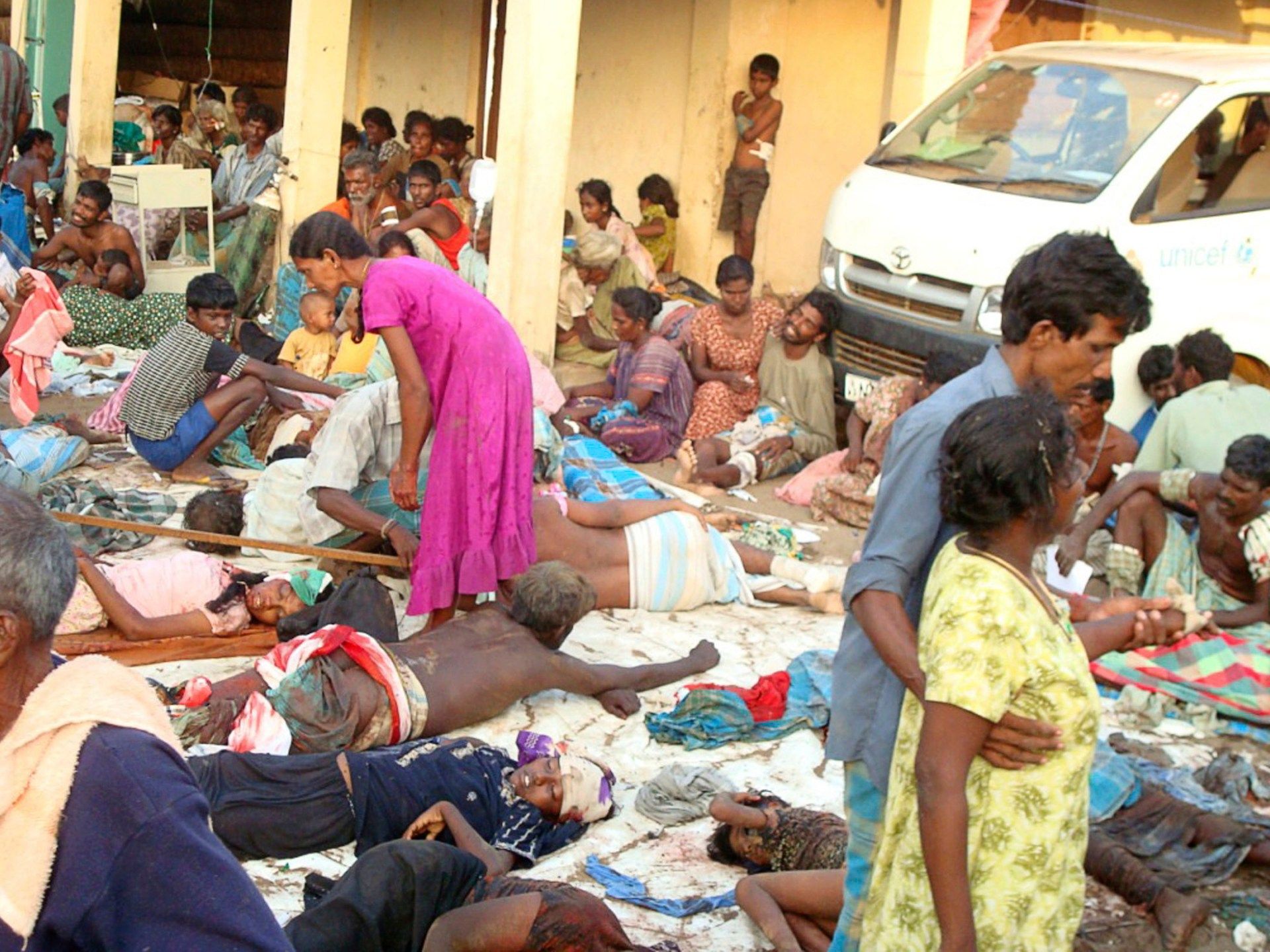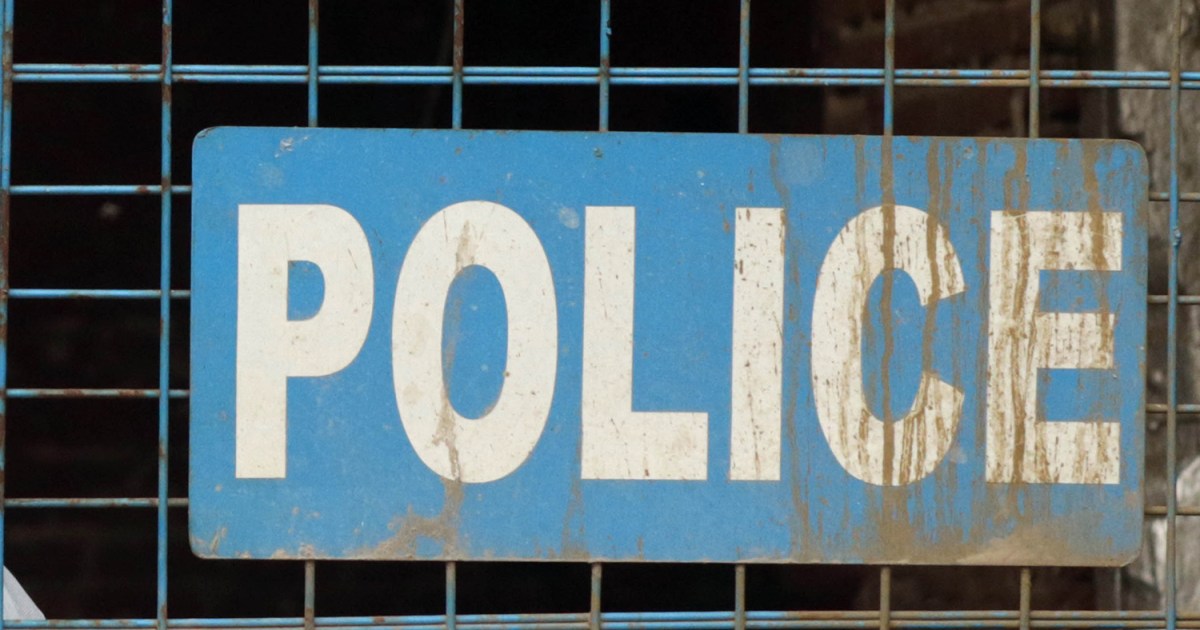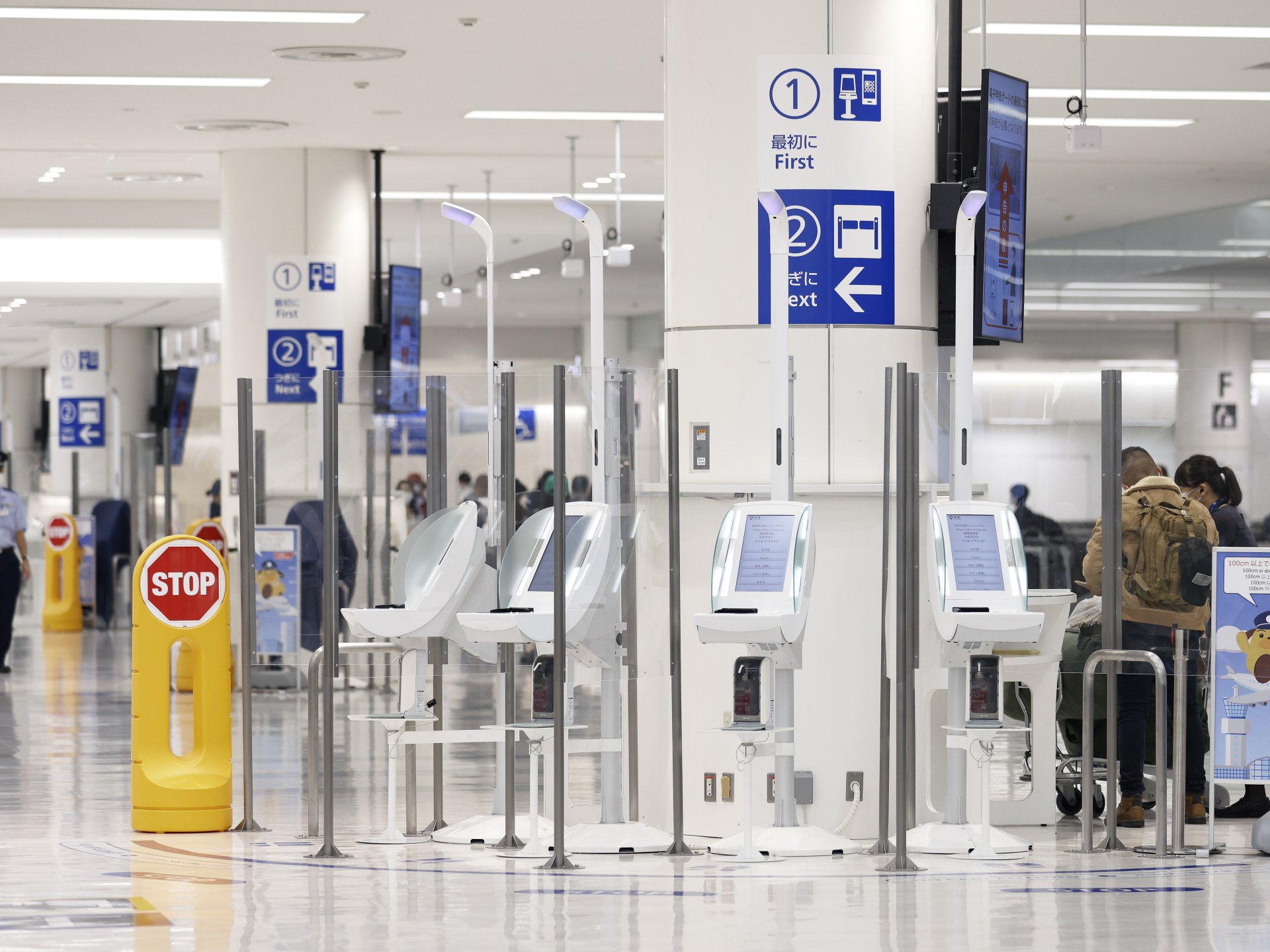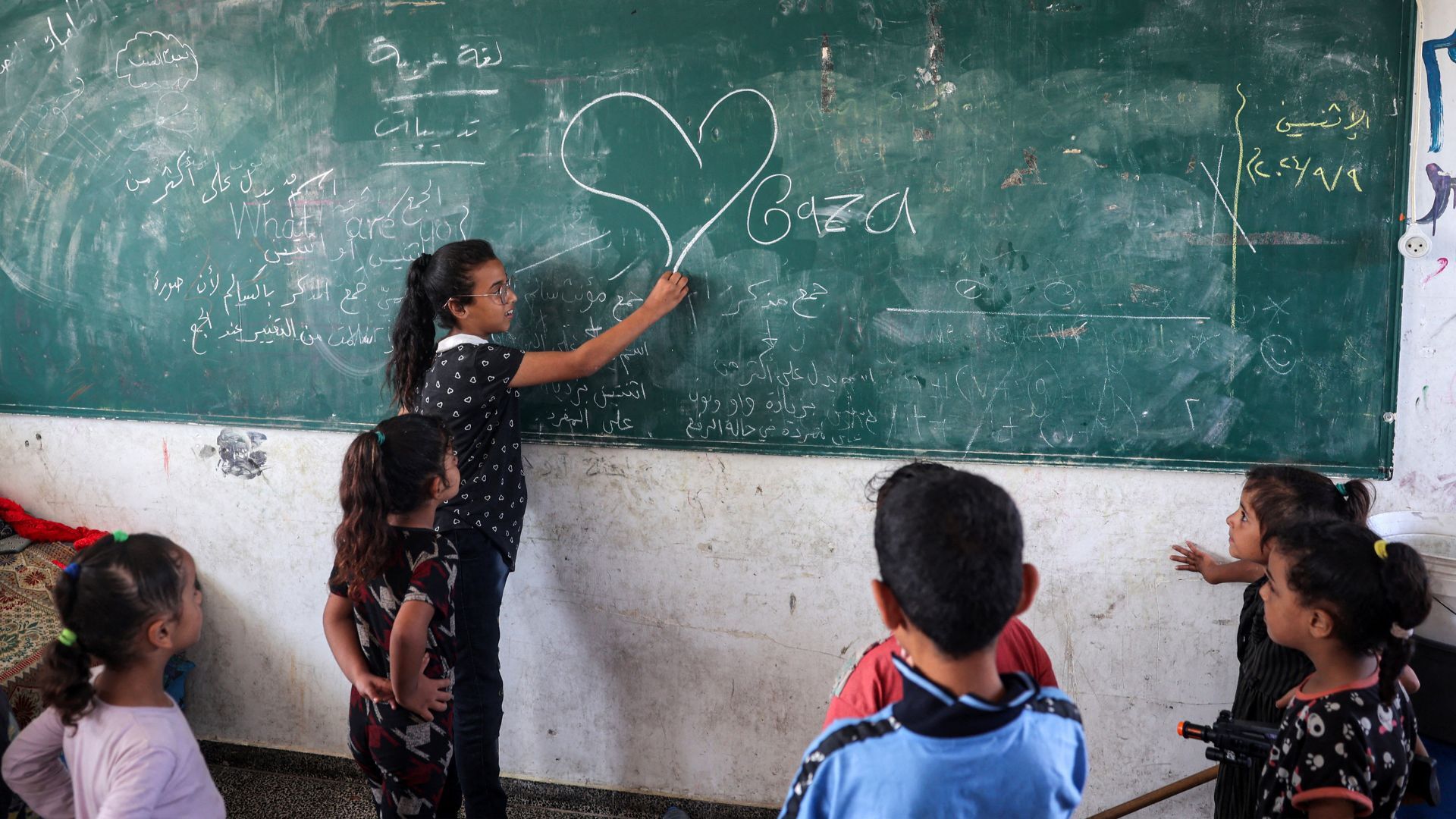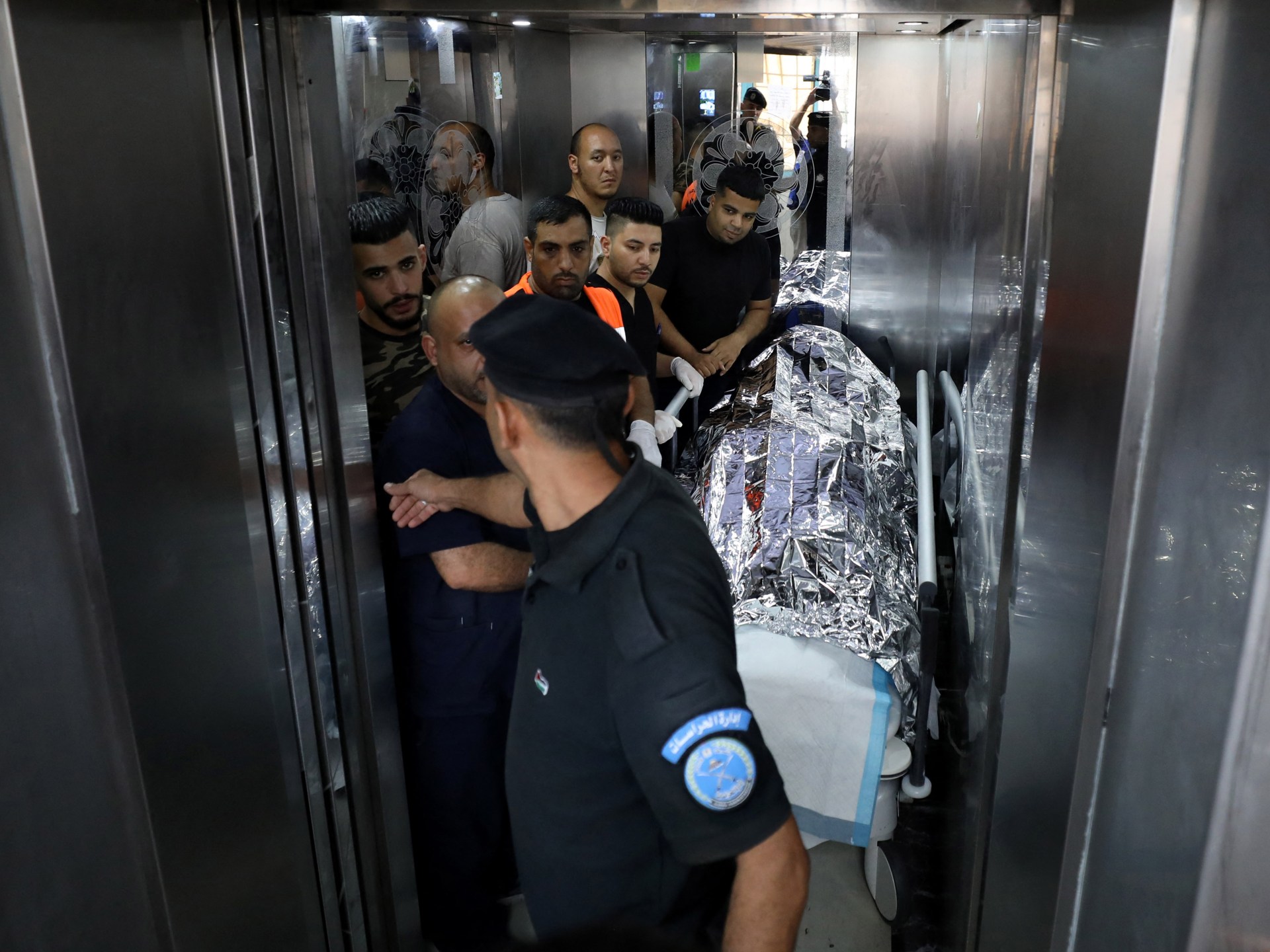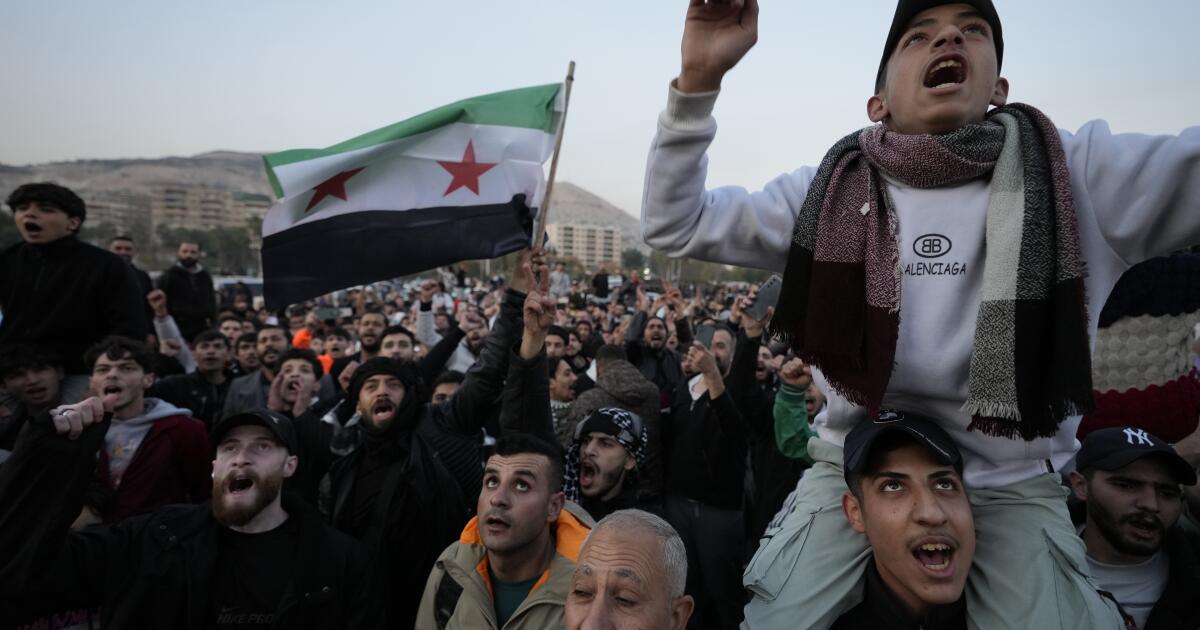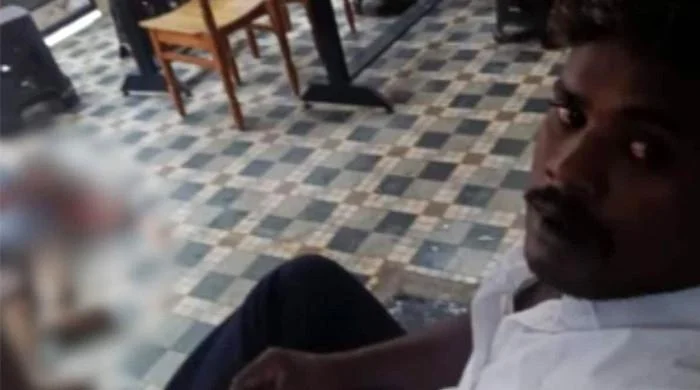Today we commemorate the 15th anniversary of the bloody end of Sri Lanka's three-decade civil war. This anniversary comes at a critical historical moment, in the midst of the humanitarian catastrophe unleashed by Israel's attack on Gaza.
The global response to Gaza, across many states, peoples and international institutions, shows that there is a strong will to uphold international standards on the protection of civilians and a strong will to address the underlying political injustices of the conflict itself, in rather than seeing it simply as a security and terrorism problem. The international failure to translate this will into concrete action is appalling, but sadly unprecedented.
The state of Sri Lanka, 15 years after the end of armed conflict, shows what happens when mass atrocities are not addressed and the political failures that led to them in the first place remain unresolved and possibly exacerbated. There are also striking and inevitable similarities between the events still unfolding in Gaza and those that took place in the Vanni, the area in northern Sri Lanka where the war ended.
In the final months of the conflict, the Sri Lankan army besieged and shelled a civilian population of 330,000 along with some 5,000 Tamil Tiger fighters, corralling them into increasingly narrow strips of land in the Vanni. The offensive was brutal and unrestrained. It destroyed and defeated the LTTE armed group, the Tamil Tigers, but also turned international humanitarian law, the laws of war and basic civil protection standards into a raging bonfire.
The Sri Lankan army bombed and shelled food distribution centres, hospitals and civilian shelters despite having received precise coordinates for the same from the United Nations and the International Committee of the Red Cross. He ordered civilians into shrinking “no-fire” zones, which he would then relentlessly attack using unguided artillery shells and multi-barreled rocket launchers, firing hundreds and sometimes thousands of shells a day.
The last of the no-fire zones was just 2 or 3 square kilometers and the death toll often reached 1,000 civilians a day, sometimes more. Sri Lanka also limited the supply of essential food and medicines, including anesthetics, in measures calculated to aggravate and exacerbate humanitarian distress.
Subsequent UN investigations concluded that the Sri Lankan army's campaign amounted to “persecution of the Vanni population”. At least 40,000 people were reported to have died in the fighting, but some estimates based on population figures suggest the death toll could be as high as 169,000.
At the end of the war, Sri Lankan authorities summarily executed LTTE cadres and others who surrendered and herded the remaining civilians to internment camps surrounded by barbed wire, ostensibly for “processing.” The government only released them after immense international pressure.
Sri Lanka justified its campaign as the only way to defeat “terrorism” and proclaimed its “victory” over the LTTE as a military model that other countries could follow. It has consistently and vehemently rejected international demands for meaningful accountability and has also refused to implement political changes that would ensure real political equality for Tamils and address the root causes of the conflict.
However, Sri Lanka's post-2009 trajectory shows that mass atrocities and the “victory” they achieve carry consequences that reverberate and not just for the Tamil population. After the war ended, Sri Lanka simply redoubled its repression against the Tamils.
The high-intensity bombing became a suffocating and ubiquitous de facto military occupation that continues to this day. Five of the army's seven regional commands are stationed in the northern and eastern provinces and in some districts there is one soldier for every two civilians.
The military is also involved in the ongoing process of “Sinhalization” and “Buddhization” of the northeast. Military personnel accompany Buddhist monks and Sinhalese settlers as they violently seize Tamil lands and places of worship to convert them into Sinhalese.
Finally, military personnel exercise constant surveillance of the daily social, cultural and political activities of Tamils, which has a chilling effect on daily life and makes any talk of “reconciliation” or even a return to “normality” ” makes no sense.
However, Tamils in former war zones and in the now extensive diaspora have not been cowed into submission. They have worked to keep the fight for justice and accountability alive. These efforts have kept Sri Lanka on the defensive internationally with repeated investigations and UN resolutions at the UN Human Rights Council. Sri Lankan officials also have to live with the ever-present danger of sanctions and possible prosecutions for their involvement in war crimes and crimes against humanity.
The war and its aftermath strengthened the Rajapaksa family and its unadorned form of Sinhalese Buddhist nationalism. From 2005 to 2022, they dominated the Sinhalese electorate and were praised as the leaders who finally defeated the Tamil separatists. However, his reckless and nepotistic approach to economics and international politics led to financial ruin and increasing isolation.
Colombo attempted to confront the geopolitical rivalries of India, China and Western states, but this failed to secure any tangible material benefits and also failed to prevent the escalation of the debt crisis. In April 2022, Sri Lanka defaulted on its debt amid severe shortages of food, fuel and essential medicines. Outrage and agitated protests sparked by the economic crisis toppled Rajapaksa's last president, but Sri Lanka is yet to find a viable or stable post-Rajapaksa settlement.
Meanwhile, the same militarization and repression used against Tamils is now being deployed against other communities. Sri Lanka has extensively used “high security zones” in Tamil-speaking areas to confiscate land, displace civilians and militarize public space. This same tactic has now been deployed to restrict protests in the capital city of Colombo. Counterterrorism measures that were normally reserved for use against Tamils are now being implemented against other dissidents and critics.
In the years since the end of the war, Muslim and Christian communities have also become targets of violence and hatred. Buddhist monks have led attacks on Muslim homes and businesses and on churches. They have led campaigns against Halal meat and the veil. During the pandemic, Muslims who had died as a result of COVID-19 infection were forcibly cremated for false “public health” reasons.
The impunity with which Sri Lanka's security forces operate is now a threat to all communities on the island. There is no better example of this than Cardinal Malcolm Ranjith's current campaign calling for an international investigation into the Easter Sunday terrorist attacks that killed 250 people.
Cardinal Ranjith had previously been a staunch ally of Rajapaksa and had opposed Tamil demands for international accountability for crimes committed at the end of the war. He is now calling for an international investigation because he is convinced, like many on the island, that elements of Sri Lanka's security state were aware of the plans for the heinous Easter Sunday attacks but took no action to bolster the ultimately successful 2020 Gotabaya Rajapaksa presidential campaign.
The effects of the Sri Lanka massacres have extended far beyond May 2009 and the Vanni killing fields. They are evident in the current de facto occupation of Tamil-speaking areas by an army that devours the scarce resources of a now effectively bankrupt state. They are evident in the political instability and increasing repression in Colombo. They are also evident in the security forces, which have become so powerful that they have been accused by a formerly loyal cardinal of allowing brutal terrorist attacks to occur to ensure the electoral victory of his preferred candidate.
Israel's attack on Gaza has rightly attracted international attention and has focused on the need to respect and uphold humanitarian law. Sri Lanka shows what happens when states that commit mass atrocities are allowed to go unpunished.
Remembering and effectively addressing the Vanni atrocities is not just about the past, but also about the future. The most immediate is the future of Sri Lanka. But it is also about rebuilding and ensuring the viability and integrity of international humanitarian law and the possibility of ensuring genuine and lasting peace, security and prosperity.
The views expressed in this article are those of the authors and do not necessarily reflect the editorial position of Al Jazeera.

